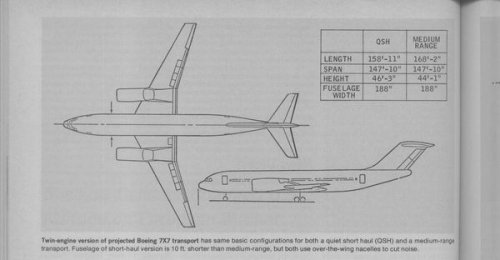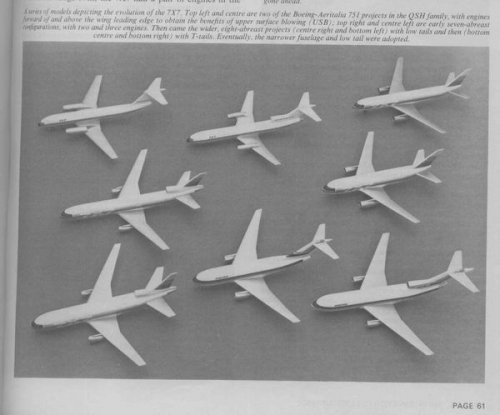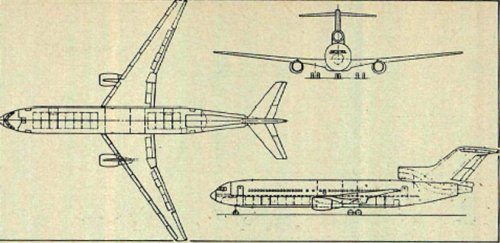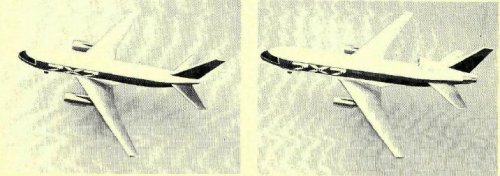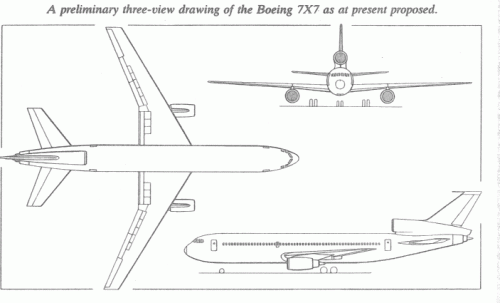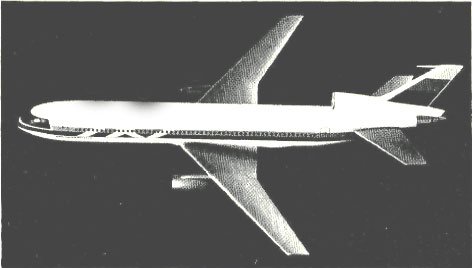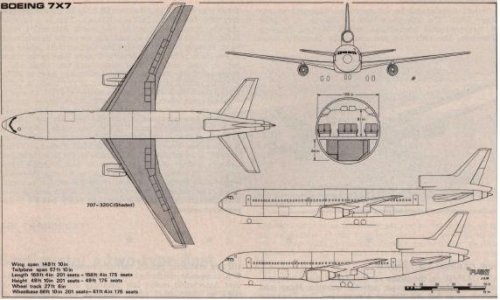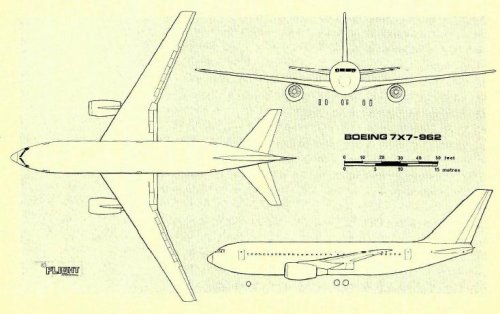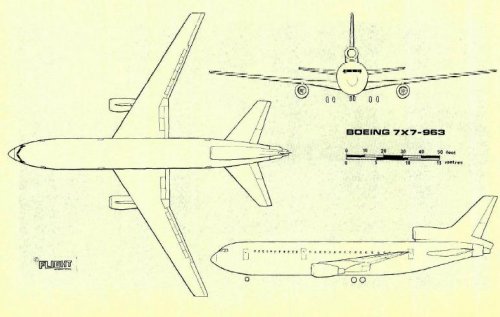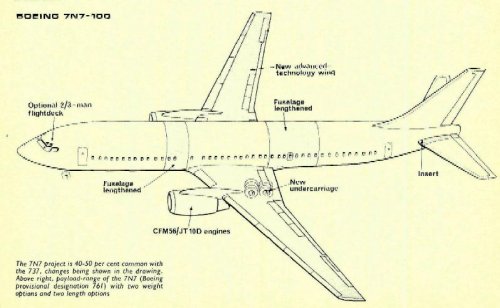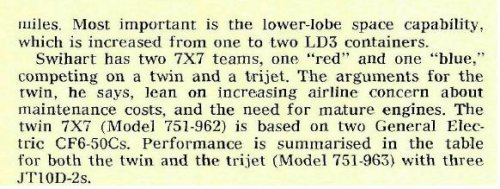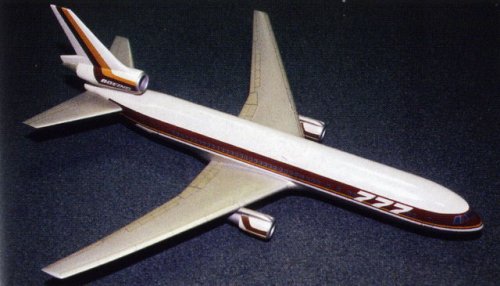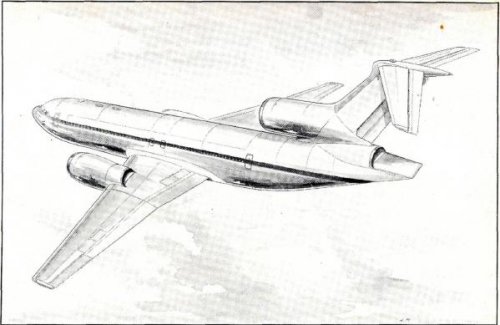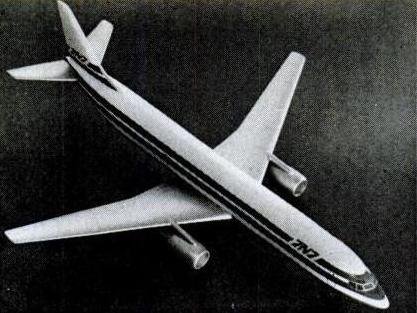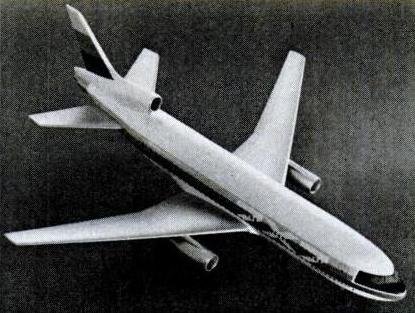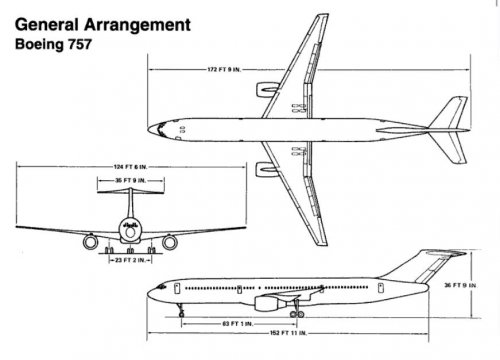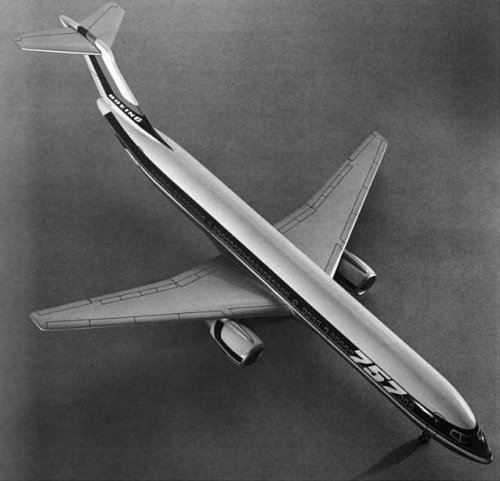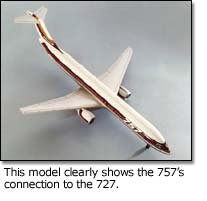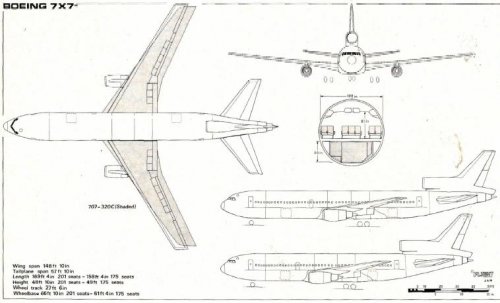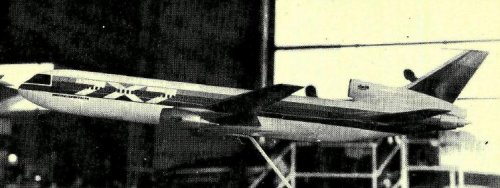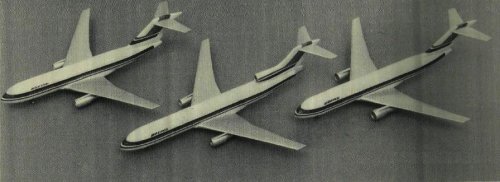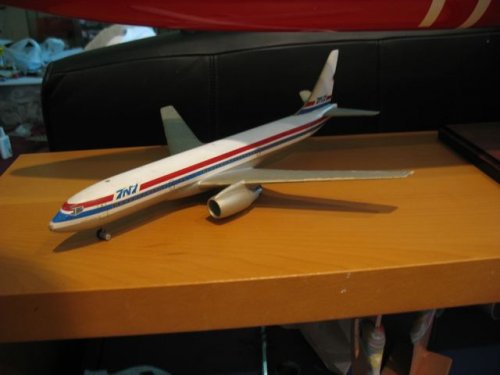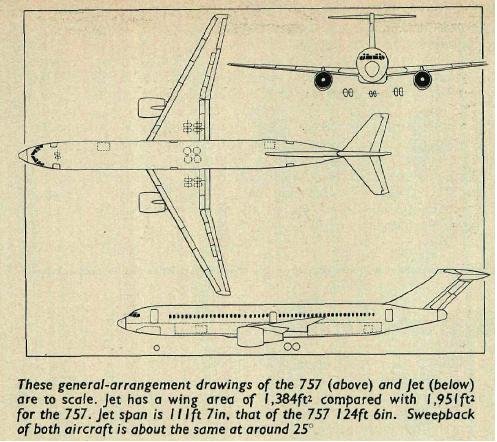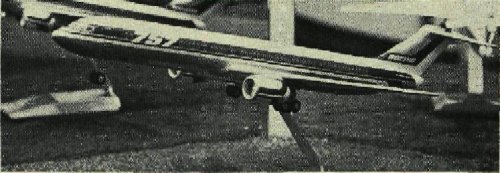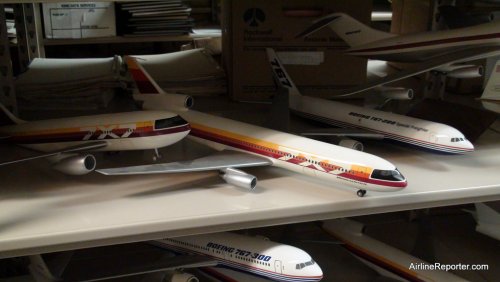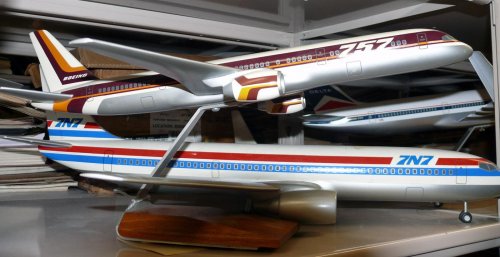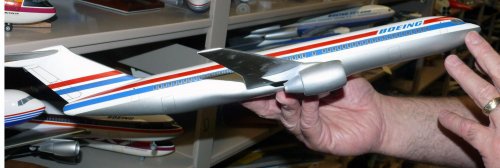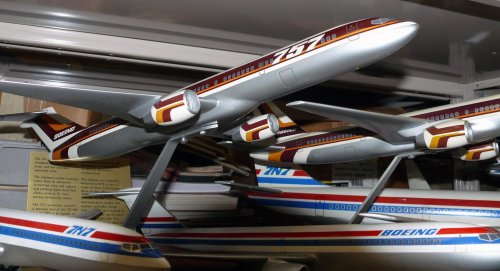You are using an out of date browser. It may not display this or other websites correctly.
You should upgrade or use an alternative browser.
You should upgrade or use an alternative browser.
Boeing 7X7 aircraft
- Thread starter hesham
- Start date
- Joined
- 13 August 2007
- Messages
- 7,880
- Reaction score
- 9,007
cool concept
to keep the Plane quiet, but there is more !
upper surface blowing USB
wen (like Boeing 7X7) jet-engine exhaust blow over wing upper surface
it increase the lift of the plane !
other was say: we got a STOL 7X7 Boeing !
to keep the Plane quiet, but there is more !
upper surface blowing USB
wen (like Boeing 7X7) jet-engine exhaust blow over wing upper surface
it increase the lift of the plane !
other was say: we got a STOL 7X7 Boeing !
- Joined
- 14 June 2006
- Messages
- 2,297
- Reaction score
- 487
Beware, the 7X7 designation was used time and again by Boeing to indicate possible future airliners. Just make a search in Flight's archives using 7X7 and see what comes out... ultimately, Boeing used the 7X7 to indicate the future 767 (and 7N7 for the 757). Even if when they aren't oddly shaped, civilian aircraft projects are fascinating and it's a pity no-one has really scanned the archives (Boeing's, for one) to try to extricate an evolutionary line for some airliners flying today. The 747 evolution is fascinating, for example, and all is generally known is a photo with some desktop models... (ok, off-topic)
- Joined
- 17 October 2006
- Messages
- 2,354
- Reaction score
- 989
7X7 at one point spawned both 7S7 and 7N7, one being single-aisle and the other twin-aisle. Check the 1975 Paris air show report and review in Flight.
Skybolt said:it's a pity no-one has really scanned the archives (Boeing's, for one) to try to extricate an evolutionary line for some airliners flying today.
A situation likely to be at least partially resolved come April.
- Joined
- 17 October 2006
- Messages
- 2,354
- Reaction score
- 989
The 767/757 story was most interesting. On the 7X7 (precursor to 767) Boeing zigged and zagged between two and three engines, and even when the 767 was launched, the company was talking about a three-engine 777 for overwater operations. ETOPS came later. The 7N7/757 was more stable, due to very solid requirements from lead customers (Eastern and BA), and it was more a question of how to do it - eventually the design went from a T-tail with a 727 cab to a low tail and a 767-common cockpit.
- Joined
- 11 March 2006
- Messages
- 8,633
- Reaction score
- 3,489
- Joined
- 14 June 2006
- Messages
- 2,297
- Reaction score
- 487
A situation likely to be at least partially resolved come April.
Originally the 7N7 was to be a stretched 737 (same body section). In Air International October or November 1975 there is a 3-view of the 3-engined 777 early concept (or what was called 777 at the time). I must dig but I have it.
- Joined
- 14 June 2006
- Messages
- 2,297
- Reaction score
- 487
- Joined
- 17 October 2006
- Messages
- 2,354
- Reaction score
- 989
Skybolt,
What that looks like is a 767-precursor family with a short-bodied domestic aircraft (left); the 200-some-seater transcontinental twin that became the 767-200 (right); and the long-range "777" with three engines (middle). I think that both the short-body aircraft and the 777 were going to have what was then called the "cropped fan" engine - either what became the RB.211-535 or the CF6-32.
This was when Boeing thought that they could hit everyone's requirements (including the BA/EAL/Delta 170-some-seater) with the same body section - and it's incidentally the reason for the unique 7-abreast cabin on the 767, because the 8-across cabin couldn't be shrunk to 170 seats.
However, the weight and economics of the short jet were not attractive; and, more important, Boeing and RR got together and pushed the idea of a new narrowbody with a 727 nose, body section and tail, a new wing to be built by British Aerospace, and the 535 engines. This became the 757.
At the time, BAe was not a partner in Airbus, Airbus was only just sputtering to life, and BAe was being asked to stump up with cash and become an Airbus partner if it was going to continue its wing-building role on the A310. Some opinion (including The Economist and UK civil servants) thought that Boeing was a better bet. From Boeing's viewpoint, getting the UK aboard the 757 would squash Airbus and clear the field for the 767.
As it was, of course, BAe went with Airbus and the A310, while RR went with the 757; and Boeing changed the 757 to emphasize commonality with the 767 and (rather to its surprise) found itself developing both the 757 and 767 in parallel.
And of course in that process, there was no way to spend any significant money on upgrading the 737, but it was getting killed by the Super 80, so something had to be done. A small team kludged together a concept with cropped CFM56s on weird pylons, and a flattened inlet to get around the vacuum-cleaner problem. And we all knew it wouldn't amount to anything, because the only airline that bought it at first was some hayseed Texas outfit called Southwest...
What that looks like is a 767-precursor family with a short-bodied domestic aircraft (left); the 200-some-seater transcontinental twin that became the 767-200 (right); and the long-range "777" with three engines (middle). I think that both the short-body aircraft and the 777 were going to have what was then called the "cropped fan" engine - either what became the RB.211-535 or the CF6-32.
This was when Boeing thought that they could hit everyone's requirements (including the BA/EAL/Delta 170-some-seater) with the same body section - and it's incidentally the reason for the unique 7-abreast cabin on the 767, because the 8-across cabin couldn't be shrunk to 170 seats.
However, the weight and economics of the short jet were not attractive; and, more important, Boeing and RR got together and pushed the idea of a new narrowbody with a 727 nose, body section and tail, a new wing to be built by British Aerospace, and the 535 engines. This became the 757.
At the time, BAe was not a partner in Airbus, Airbus was only just sputtering to life, and BAe was being asked to stump up with cash and become an Airbus partner if it was going to continue its wing-building role on the A310. Some opinion (including The Economist and UK civil servants) thought that Boeing was a better bet. From Boeing's viewpoint, getting the UK aboard the 757 would squash Airbus and clear the field for the 767.
As it was, of course, BAe went with Airbus and the A310, while RR went with the 757; and Boeing changed the 757 to emphasize commonality with the 767 and (rather to its surprise) found itself developing both the 757 and 767 in parallel.
And of course in that process, there was no way to spend any significant money on upgrading the 737, but it was getting killed by the Super 80, so something had to be done. A small team kludged together a concept with cropped CFM56s on weird pylons, and a flattened inlet to get around the vacuum-cleaner problem. And we all knew it wouldn't amount to anything, because the only airline that bought it at first was some hayseed Texas outfit called Southwest...
- Joined
- 14 June 2006
- Messages
- 2,297
- Reaction score
- 487
Yep, actually, there was at least a year worth of studies after those models before the "real" 757-767 designs were officially launched. Naturally there was a measure of disinformazya (Russian speaking members, forgive my transliteration) in all those models and 3-views distributed to the press.
- Joined
- 17 October 2006
- Messages
- 2,354
- Reaction score
- 989
Again (blowing dust from memory), Boeing in the mid-1970s was trying to devise a strategy to deal with a number of issues:
* The need for an aircraft between the 737/DC-9 and TriStar/DC-10, quieter and larger than the 727.
* The fact that requirements diverged, with Delta, Eastern and BA looking for a 1500-mile aircraft a bit bigger than a 727, and United wanting a 200-seat transcon.
* Boeing had never developed two aircraft in parallel before and did not want to.
* The potential to strangle Airbus in its crib by keeping the Brits out of the program (at the time they were only subs).
The result was a complex juggling act that involved various permutations of 7X7 (twin-aisle) and 7N7 (N=narrowbody). As I noted earlier, one approach was to cover everything with the 7X7 including a twin-cropped-fan short version.
However, the near-final approach was a 7X7 in two versions - two 50K engines for domestic, three 32K engines intercon - and a 7N7 using 727 parts, a UK-built wing and two of the 32K engines.
By the time the Brits committed to Airbus, though, the market was rebounding and Boeing decided to do the 7N7 (now 757) anyway, using a common cab and other features to maximize commonality with the 7X7 (767).
The trijet never got built, because Boeing went for ETOPS instead with the 767-200ER.
* The need for an aircraft between the 737/DC-9 and TriStar/DC-10, quieter and larger than the 727.
* The fact that requirements diverged, with Delta, Eastern and BA looking for a 1500-mile aircraft a bit bigger than a 727, and United wanting a 200-seat transcon.
* Boeing had never developed two aircraft in parallel before and did not want to.
* The potential to strangle Airbus in its crib by keeping the Brits out of the program (at the time they were only subs).
The result was a complex juggling act that involved various permutations of 7X7 (twin-aisle) and 7N7 (N=narrowbody). As I noted earlier, one approach was to cover everything with the 7X7 including a twin-cropped-fan short version.
However, the near-final approach was a 7X7 in two versions - two 50K engines for domestic, three 32K engines intercon - and a 7N7 using 727 parts, a UK-built wing and two of the 32K engines.
By the time the Brits committed to Airbus, though, the market was rebounding and Boeing decided to do the 7N7 (now 757) anyway, using a common cab and other features to maximize commonality with the 7X7 (767).
The trijet never got built, because Boeing went for ETOPS instead with the 767-200ER.
- Joined
- 14 June 2006
- Messages
- 2,297
- Reaction score
- 487
- Joined
- 20 January 2007
- Messages
- 923
- Reaction score
- 1,032
We Brits (and the French) hype US interest in us, as market, partners, or competitors (See Wiki on Belfast's market, see any TSR.2 "conspiracy" post: both "sacrificed" under "US pressure". None of the above: frankly, my dears, they didn't give a darn). US Aero, Mid-70s, was all about MDC/Lockheed avoiding Convair's civil fate under market change: potential deregulation of US domestic air transport (actioned from 1977 by new Pres.Carter). What products would a new carrier-industry seek? GD gave up design, happy to build great chunks of DC-10/747, bill and run; MDC sought to turn DC-10 into a Big-Twin; France wanted to make an aeroplane out of Mercure (led not by Aerospatiale/Airbus, but by Dassault). BA, trading from April,1974, wanted its fleet to come from Seattle. HSAL had stayed in Airbus as a private venture when UK Govt. pulled out in April,1969, but few A300B2 had been sold. A310 in 1976 was looking for funding: AI's owners told HSAL to stump up, or lose the wings, even of A300B4 too. UKGovt. had decided to nationalise HSAL+BAC (who had a trickle of 1-11s and little else), as BAe. (trading 29 April,1977). Italy had chunks of DC-9/10.
In early 1977 MDC and Boeing saw Euro-Aero as bankers: it was our money they wanted, cos they had our market locked up (see UTA/DLH/AZ DC-10). UK PM Jim Callaghan despaired of making any sense of the airframe industry he was about to own: he already owned RR who lobbied against any airframe money, which would be instead of Govt spend on RB211s into US types. So did GEC, who owned 50% of BAC and looked forward to unloading it without further investment. He went off to Washington for a weekend with MDC and Boeing, who offered him participation in their projects. His Memoirs talk of them treating him as from a less-developed country. The Boeing offer of BAe. 757 wing was to Boeing-design, at Boeing-imposed price. He came back, invested in A310 Launch Aid to secure the wing (and soon bought back 20% equity in AI), funded various RB211s, and gave BA freedom to act commercially - so to reject 146 for 737-200(ADV), to launch 757 as bespoke Shuttle People-carrier, and to take 767-200 (on which he imposed, ludicrously, heavy RB211-524H for routes where its advantage - cruise efficiency, would never be realised). France told Dassault to stick to Mirages; Italy took chunks of MD80/MD11 and suffered much pain...though less than MDC.
In early 1977 MDC and Boeing saw Euro-Aero as bankers: it was our money they wanted, cos they had our market locked up (see UTA/DLH/AZ DC-10). UK PM Jim Callaghan despaired of making any sense of the airframe industry he was about to own: he already owned RR who lobbied against any airframe money, which would be instead of Govt spend on RB211s into US types. So did GEC, who owned 50% of BAC and looked forward to unloading it without further investment. He went off to Washington for a weekend with MDC and Boeing, who offered him participation in their projects. His Memoirs talk of them treating him as from a less-developed country. The Boeing offer of BAe. 757 wing was to Boeing-design, at Boeing-imposed price. He came back, invested in A310 Launch Aid to secure the wing (and soon bought back 20% equity in AI), funded various RB211s, and gave BA freedom to act commercially - so to reject 146 for 737-200(ADV), to launch 757 as bespoke Shuttle People-carrier, and to take 767-200 (on which he imposed, ludicrously, heavy RB211-524H for routes where its advantage - cruise efficiency, would never be realised). France told Dassault to stick to Mirages; Italy took chunks of MD80/MD11 and suffered much pain...though less than MDC.
hesham said:Good fing my dear Jemiba,
and I have a drawing to Boeing 7X7 with two rear engines mounted.
Its strange but the B747 with 4 wing mounted engines looks OK but the proposed BAC1199 'jumbo' with a raised B747 style cockpit area but 4 tail mounted engines doesn't.
- Joined
- 26 May 2006
- Messages
- 33,572
- Reaction score
- 13,702
Hi,
the Boeing 7X7 was called in Flightglobal Model 751,and here is
Model 751-962 and Model 751-963,also the Boeing 7N7 was
called Model-761.
http://www.flightglobal.com/pdfarchive/view/1976/1976%20-%201043.html
http://www.flightglobal.com/pdfarchive/view/1976/1976%20-%201044.html
http://www.flightglobal.com/pdfarchive/view/1976/1976%20-%201045.html
the Boeing 7X7 was called in Flightglobal Model 751,and here is
Model 751-962 and Model 751-963,also the Boeing 7N7 was
called Model-761.
http://www.flightglobal.com/pdfarchive/view/1976/1976%20-%201043.html
http://www.flightglobal.com/pdfarchive/view/1976/1976%20-%201044.html
http://www.flightglobal.com/pdfarchive/view/1976/1976%20-%201045.html
Attachments
Just call me Ray
ACCESS: Top Secret
- Joined
- 26 August 2007
- Messages
- 672
- Reaction score
- 49
Looks like the 7N7 became the 737NG series (-600, -700, -800 and -900 series)
- Joined
- 17 October 2006
- Messages
- 2,354
- Reaction score
- 989
The 7N7 - right, at one point it was a family that went down to about 150 seats with CFM56/JT10D. But with 727s still selling and DC-9 Super 80 on the way, the market wasn't ready (and indeed the jet shown above would have been too expensive), so the 7N7 became the 757-200 with bigger engines. Note that this aircraft has an all-new wing and landing gear, where the key to the 737-300 was that it had a modified 737-200 wing and gear.
"The future of flight—redefined" by Michael Lombardi form Boeing Frontiers Online:
Another image of model of Boeing 757 Concept 227 and line drawing of General Arrangement from Boeing 757 by Philip Birtles, MBI Publishing Company, LLC, 2001.
http://books.google.com/books?id=qsKRXDFNd8cC&printsec=frontcover&dq=Boeing+757&lr=&as_brr=3#v=onepage&q=&f=false
http://www.boeing.com/news/frontiers/archive/2002/december/i_history.htmlThe new 727 replacement—initially dubbed the 7N7—was a single-aisle aircraft that married the basic 727-200 fuselage with a new high-performance wing and new fuel-efficient, high-bypass engines.
The 7N7 design evolved into a 180-passenger airplane that was able to take advantage of the latest engines and boasted a predicted fuel savings of 35 percent per seat. (Inservice fuel savings later proved to be 43 percent.)
This gave Boeing enough confidence in the design to give the 7N7 a place in the Boeing family as the 757, and the chief engineer of the new 757 program was Phil Condit, current chairman and chief executive officer of Boeing.
One of the key design goals of the 757 was commonality with the 767, a twin-aisle airplane developed in tandem with the 757. Boeing dropped the 757's T-tail in favor of a conventional tail and widened the nose, giving it a more blunt appearance than the original 727 nose and enabling engineers to fit the new high-technology 767 cockpit in the 757. The common cockpits allowed airlines to certify pilots simultaneously to fly both aircraft.
Boeing launched the 757 in the spring of 1979 with orders from Eastern Airlines and British Airways for 40 aircraft. Rolls Royce became a partner in the 757 when Boeing announced that it would use the Rolls Royce RB-211 engines on the 757.
On Jan. 13, 1982, only five months after the rollout of the 767, Boeing introduced the 757 to employees inside the assembly building at the Renton, Wash., site. Once again, Boeing did what many said no one could do: Boeing had developed two new commercial transports at the same time.
Another image of model of Boeing 757 Concept 227 and line drawing of General Arrangement from Boeing 757 by Philip Birtles, MBI Publishing Company, LLC, 2001.
http://books.google.com/books?id=qsKRXDFNd8cC&printsec=frontcover&dq=Boeing+757&lr=&as_brr=3#v=onepage&q=&f=false
Attachments
Model of Boeing 7X7, developed in collaboration with Aeritalia, shown at the 1975 Paris Air Show.
Source: "A Shape of a New Airliner?" Flight International June 12, 1975 p. 941.
http://www.flightglobal.com/pdfarchive/view/1975/1975%20-201041.html
Source: "A Shape of a New Airliner?" Flight International June 12, 1975 p. 941.
http://www.flightglobal.com/pdfarchive/view/1975/1975%20-201041.html
Attachments
Models (left to right) Boeing 767-200, 777-200, and 767-100 circa 1978.
Source: Ramsden, JM. "Boeing 767 and 777" Flight International May 13, 1978 p. 1462
http://www.flightglobal.com/pdfarchive/view/1978/1978%20-%200788.html
Source: Ramsden, JM. "Boeing 767 and 777" Flight International May 13, 1978 p. 1462
http://www.flightglobal.com/pdfarchive/view/1978/1978%20-%200788.html
Attachments
Model of Boeing 7X7 from the San Diego Air and Space Museum Archive.
Source: http://www.flickr.com/photos/sdasmarchives/4589700875
Model of Boeing Aeritalia 7X7 from the San Diego Air and Space Museum Archive.
Source: http://www.flickr.com/photos/sdasmarchives/4589700909
Artist's impression of Boeing Aeritalia 7X7 from the San Diego Air and Space Museum Archive.
Source:http://www.flickr.com/photos/sdasmarchives/4589700953
Model of Boeing 7X7 from the San Diego Air and Space Museum Archive.
Source: http://www.flickr.com/photos/sdasmarchives/4590321234
Model of Boeing 7X7 from the San Diego Air and Space Museum Archive.
Source: http://www.flickr.com/photos/sdasmarchives/4589700983
Model of Boeing 777-100 from the San Diego Air and Space Museum Archive.
Source:http://www.flickr.com/photos/sdasmarchives/4590321260
Model of Boeing 7X7 from the San Diego Air and Space Museum Archive.
Source: http://www.flickr.com/photos/sdasmarchives/4589701035
Model of Boeing 777 from the San Diego Air and Space Museum Archive.
Source: http://www.flickr.com/photos/sdasmarchives/4590321316
Source: http://www.flickr.com/photos/sdasmarchives/4589700875
Model of Boeing Aeritalia 7X7 from the San Diego Air and Space Museum Archive.
Source: http://www.flickr.com/photos/sdasmarchives/4589700909
Artist's impression of Boeing Aeritalia 7X7 from the San Diego Air and Space Museum Archive.
Source:http://www.flickr.com/photos/sdasmarchives/4589700953
Model of Boeing 7X7 from the San Diego Air and Space Museum Archive.
Source: http://www.flickr.com/photos/sdasmarchives/4590321234
Model of Boeing 7X7 from the San Diego Air and Space Museum Archive.
Source: http://www.flickr.com/photos/sdasmarchives/4589700983
Model of Boeing 777-100 from the San Diego Air and Space Museum Archive.
Source:http://www.flickr.com/photos/sdasmarchives/4590321260
Model of Boeing 7X7 from the San Diego Air and Space Museum Archive.
Source: http://www.flickr.com/photos/sdasmarchives/4589701035
Model of Boeing 777 from the San Diego Air and Space Museum Archive.
Source: http://www.flickr.com/photos/sdasmarchives/4590321316
Attachments
-
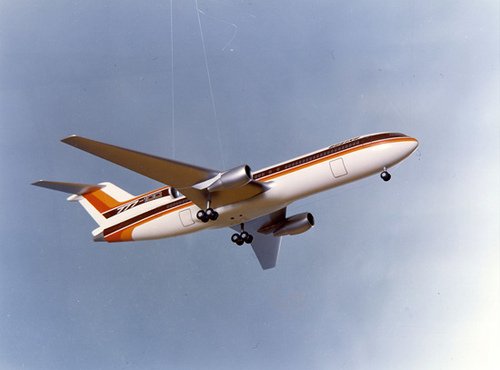 4590321316_4f78393ae3.jpg67.1 KB · Views: 256
4590321316_4f78393ae3.jpg67.1 KB · Views: 256 -
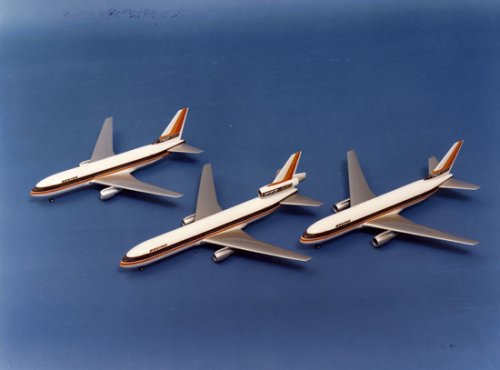 4589701035_a4811f95c5_o.jpg66.9 KB · Views: 265
4589701035_a4811f95c5_o.jpg66.9 KB · Views: 265 -
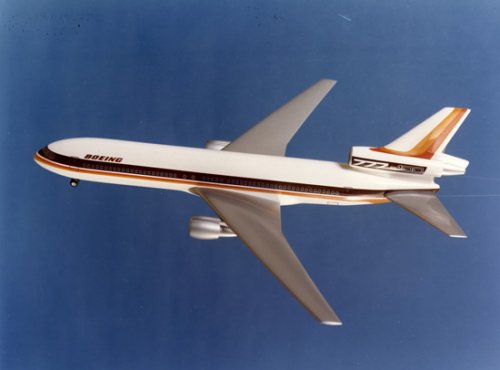 4590321260_b9c7e99e9b_o.jpg60.3 KB · Views: 258
4590321260_b9c7e99e9b_o.jpg60.3 KB · Views: 258 -
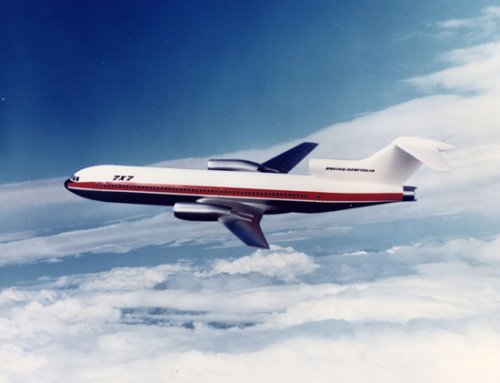 4590321234_bdb32dafc0_o.jpg72.5 KB · Views: 750
4590321234_bdb32dafc0_o.jpg72.5 KB · Views: 750 -
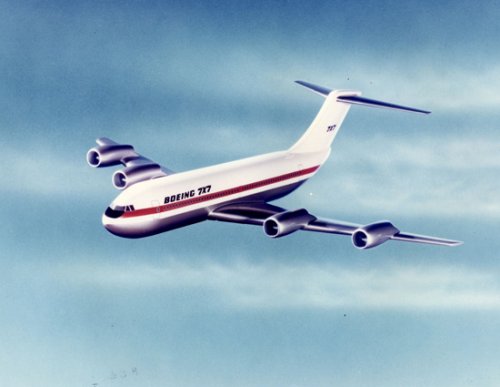 4589700983_67cbd71369_o.jpg75.2 KB · Views: 804
4589700983_67cbd71369_o.jpg75.2 KB · Views: 804 -
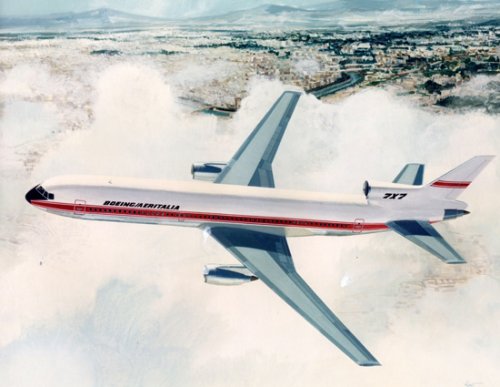 4589700953_088c463cab_o.jpg102.5 KB · Views: 807
4589700953_088c463cab_o.jpg102.5 KB · Views: 807 -
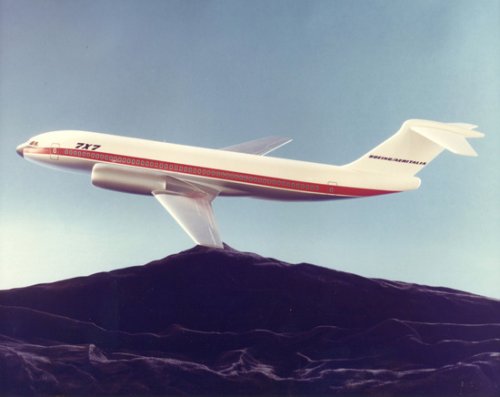 4589700909_9fb019d0cf_o.jpg67.6 KB · Views: 825
4589700909_9fb019d0cf_o.jpg67.6 KB · Views: 825 -
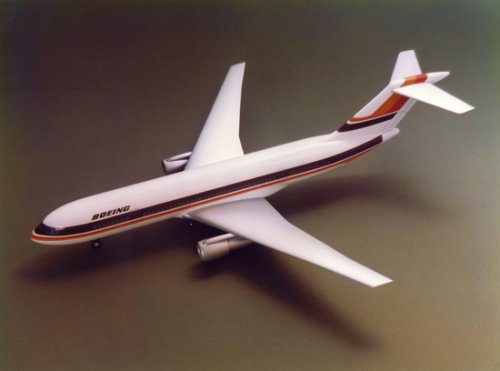 4589700875_a4434363f7_o.jpg62.8 KB · Views: 832
4589700875_a4434363f7_o.jpg62.8 KB · Views: 832
Attachments
- Joined
- 26 May 2006
- Messages
- 33,572
- Reaction score
- 13,702
taildragger
You can count on me - I won a contest
- Joined
- 2 November 2008
- Messages
- 392
- Reaction score
- 477
Around the time the 757 lost it's 727-style tail, it also lost the 707/727/737-style nose. As I recall, the motivation for this was to reduce airflow noise in the cockpit but commonality with the 767 cockpit may also have been a factor. I've always wondered why, if this change was worthwhile on the 757, subsequent versions of the 737 have kept the "classic" nose. Any ideas?
- Joined
- 5 May 2007
- Messages
- 349
- Reaction score
- 384
If I recall correctly, there is a significant amount of 727 "DNA" in the 757, as the aircraft itself began as a 727 improvement/replacement program. Aside from the 707/727/737 diameter fuselage, as stated, the aircraft initially featured the typical Boeing narrow-body nose.
However, the most visible remnant of the 757's 727 heritage is the keel-line wing, which I believe is at the heart of the 757's tall stance and good looks.
However, the most visible remnant of the 757's 727 heritage is the keel-line wing, which I believe is at the heart of the 757's tall stance and good looks.
This version of the 757 rung a bell. Back when I was much younger I got some brochures from some aircraft manufacturers, including Boeing. It was a full colour booklet on a new plane they were building with a T-tail. Seeing these photos of the 757, I thought I had a booklet for it. So I went hunting for it and found it. However, the booklet was for a 767 - with a T-Tail. This would have been around 1978, the same time as the articles in the OP. Given their development occurred at basically the same time, its not surprising that the 767 had a T-tail as well. Interesting that both entered production without them.
There is an existing topic devoted to the Boeing 7X7 project that contains information about the Boeing 7N7. The Boeing 7N7 would become the Boeing 757.
URL:
http://www.secretprojects.co.uk/forum/index.php/topic,3241.msg26101.html#msg26101
There is also this topic devoted to the Boeing 7N7.
URL:
http://www.secretprojects.co.uk/forum/index.php/topic,3804.0.html
URL:
http://www.secretprojects.co.uk/forum/index.php/topic,3241.msg26101.html#msg26101
There is also this topic devoted to the Boeing 7N7.
URL:
http://www.secretprojects.co.uk/forum/index.php/topic,3804.0.html
Model of Boeing 7N7 Model 761 located in the Boeing Archives Bellevue, Washington.
Source:
http://airchive.com/html/museums/boeing-archives-bellevue-washington-usa/boeing-757-7n7model-761-development-models-1970s/19104
http://airchive.com/html/museums/boeing-archives-bellevue-washington-usa/boeing-757-7n7model-761-development-models-at-boeing-archive/19049
http://airchive.com/html/museums/boeing-archives-bellevue-washington-usa/boeing-757-7n7model-761-development-models-at-boeing-archive/19050
http://airchive.com/html/museums/boeing-archives-bellevue-washington-usa/boeing-757-7n7model-761-development-models-at-boeing-archive/19052
In the early 1970s, Boeing began considering further developments of its narrow-body 727 trijet. The 727 was the best-selling commercial jet of the 1960s. Development studies focused around two tracks: a stretched 727-200 called the 727-300 and another study called the 7N7. The 727-300 would feature high-bypass engines in a trijet configuration while the 7N7 was a narrow-body twinjet which incorporated new materials and propulsion advances. There was initial strong interest in the 727-300, from airlines such as United and Braniff, but attention shifted to the 7N7. With the escalating fuel prices of the 1970s, airlines showed greater interest in a clean-sheet design with high-bypass-ratio turbofan engines, new flight deck technologies, lowered weight, improved aerodynamics, and reduced operating costs. These new technological leaps were also included in a parallel development effort, code-named 7X7, for a mid-size wide-body which would become the 767. By 1978, the 7N7 studies focused on two variants: a 7N7-100 with seating for 160, and a 7N7-200 with capacity for over 180 seats. The T-tail configuration of the 727 remained along with its narrow-body construction, forward fuselage, and flight deck layout, while a redesigned wing and new under-wing engines were added. Boeing touted the 7N7 as offering the lowest fuel burn per passenger-mile of any narrow-body airliner. On August 31, 1978, the 7N7 received its first airline commitments when Eastern Air Lines and British Airways announced launch orders totaling 40 aircraft for the −200 version. At this point, the T-tail was eliminated. These orders were formally signed in March 1979, at which time Boeing officially designated its new twinjet as the 757. The shorter −100 development, which failed to attract any orders, was dropped, with its role eventually taken by the versions of the 737. The 757 became very popular from its 1983 entry into service with Eastern and British Airways to the present day. Production of the 757 ended on October 28, 2004, after 1,050 had been built. The 757-200 is the most common variant, accounting for the majority of all 757s ordered. The 757-300 is the longest narrow-body twinjet ever produced. As of 2010, Delta Air Lines operates the largest 757 fleet, and 945 examples are in airline service worldwide Also of note, Boeing was experimenting with new house colors which eventually became the classic white fuselage with red and blue cheatlines of the 1980s and 1990s. Courtesy: Wikipedia
Source:
http://airchive.com/html/museums/boeing-archives-bellevue-washington-usa/boeing-757-7n7model-761-development-models-1970s/19104
http://airchive.com/html/museums/boeing-archives-bellevue-washington-usa/boeing-757-7n7model-761-development-models-at-boeing-archive/19049
http://airchive.com/html/museums/boeing-archives-bellevue-washington-usa/boeing-757-7n7model-761-development-models-at-boeing-archive/19050
http://airchive.com/html/museums/boeing-archives-bellevue-washington-usa/boeing-757-7n7model-761-development-models-at-boeing-archive/19052
Attachments
Similar threads
-
1972 Airliner Projects - QSH and HS.148
- Started by hesham
- Replies: 2
-
-
CASA/BAC/MBB/SAAB 'Europlane' quiet take-off aircraft (QTOL)
- Started by hesham
- Replies: 21
-
-


